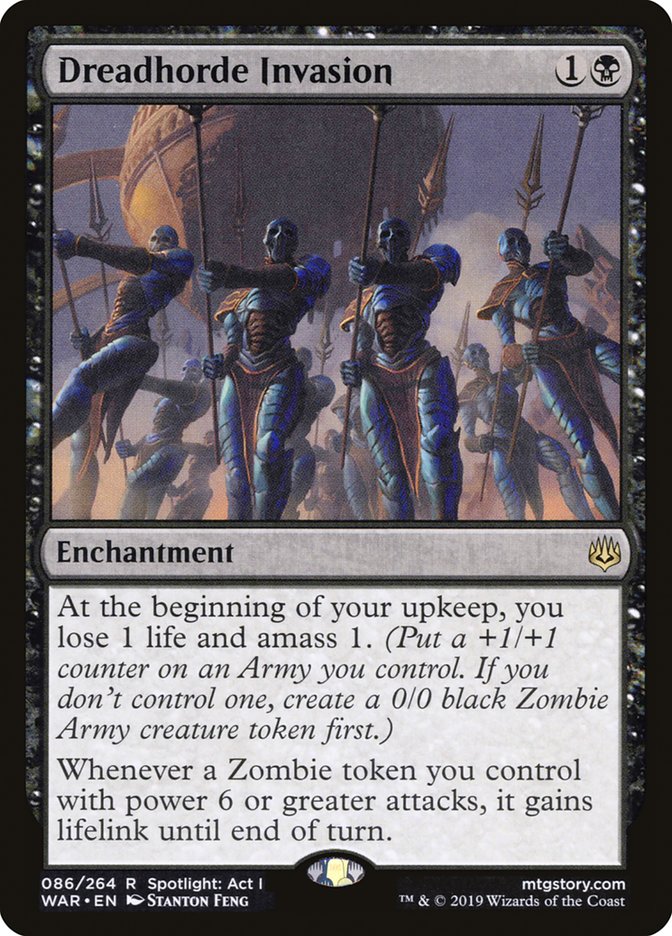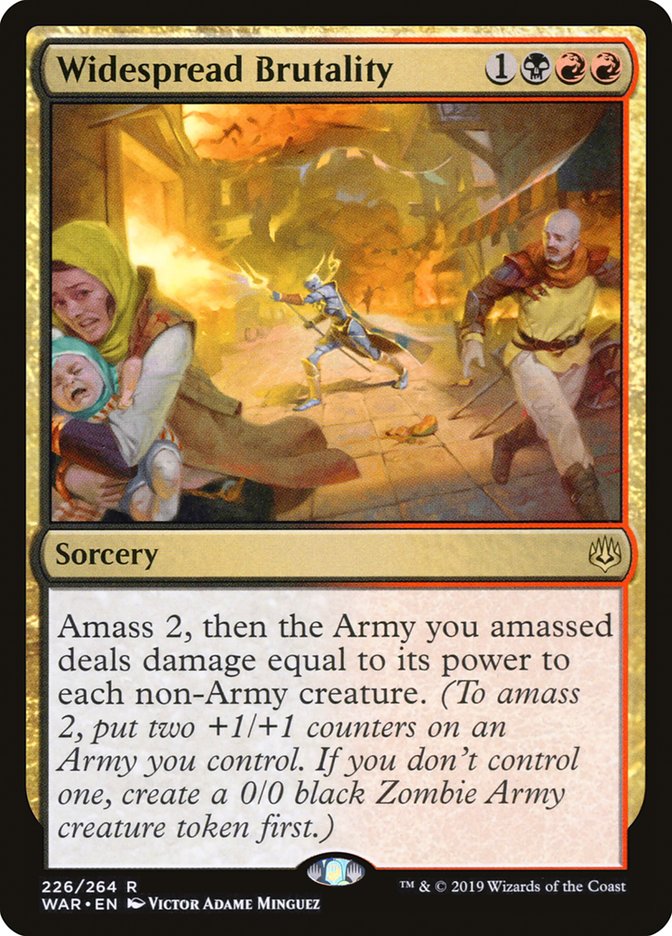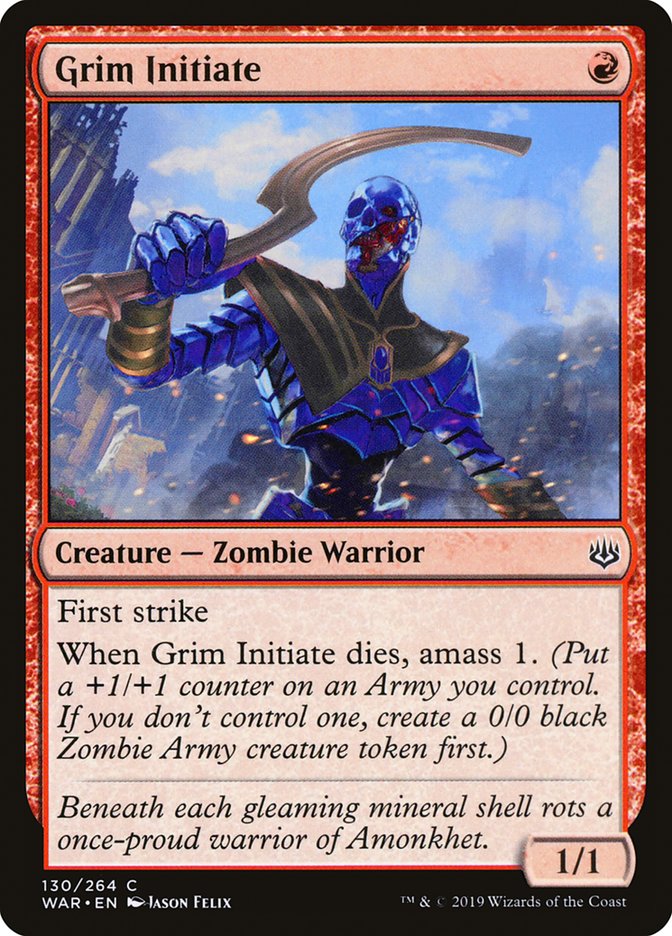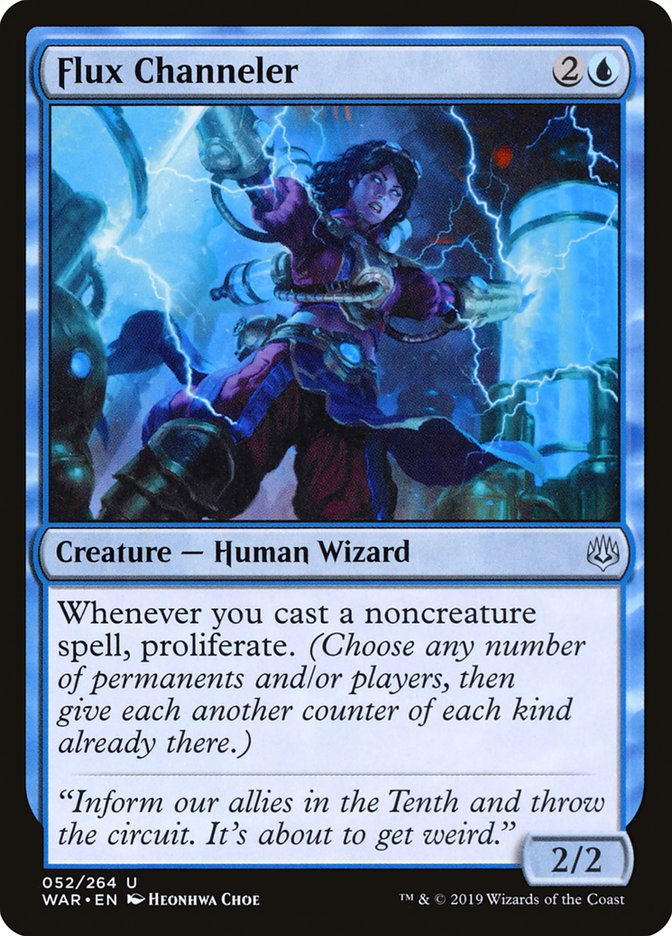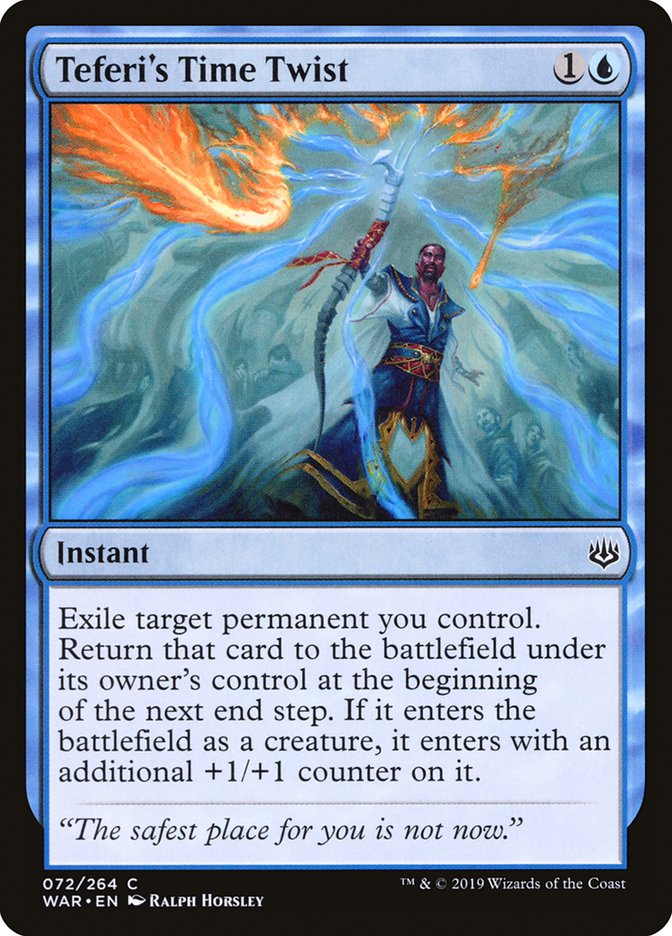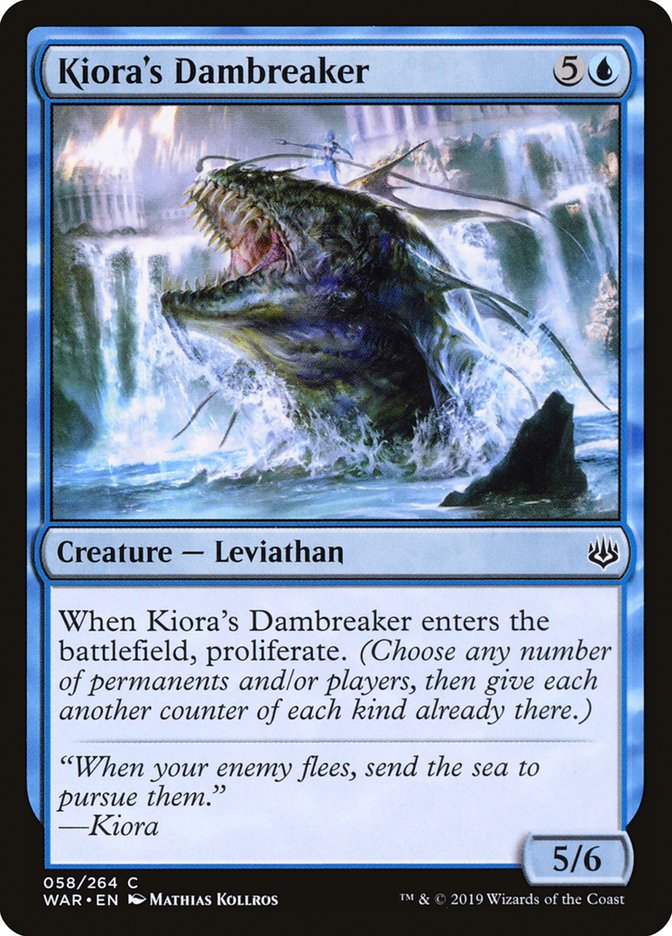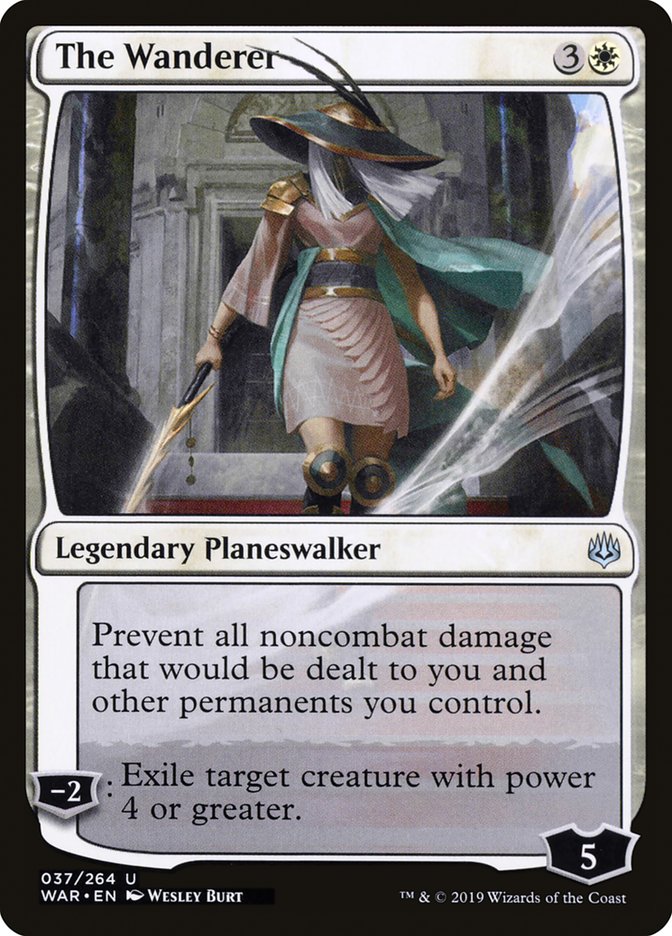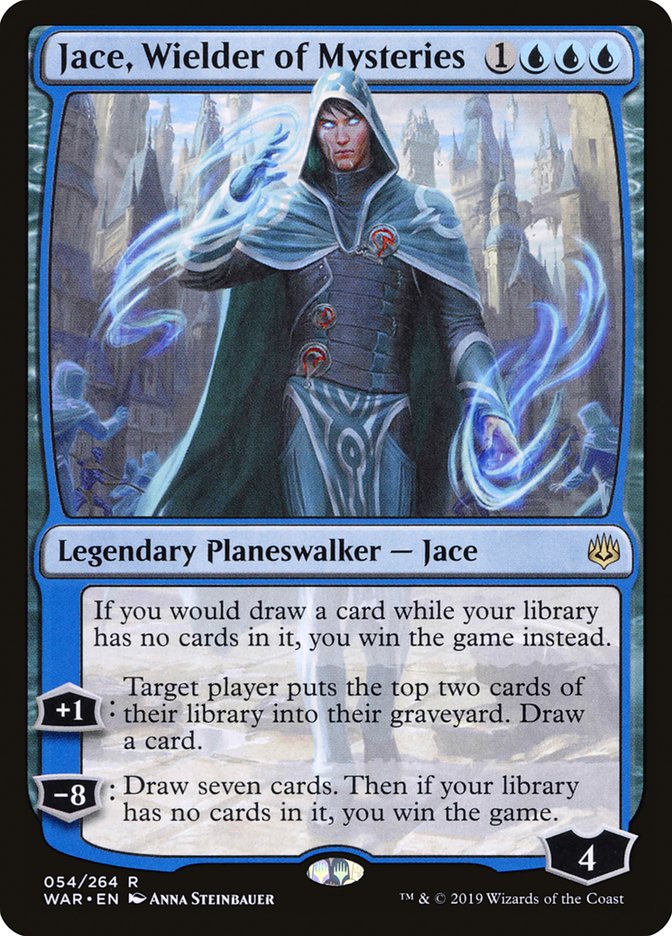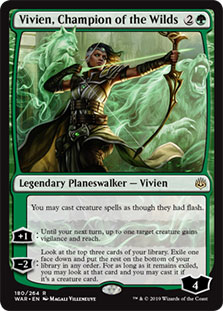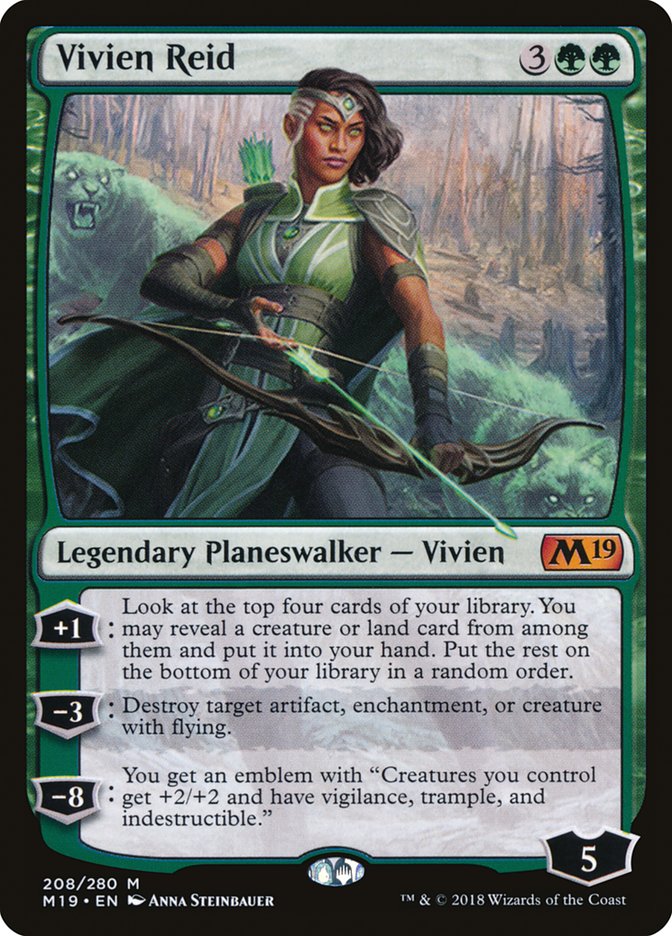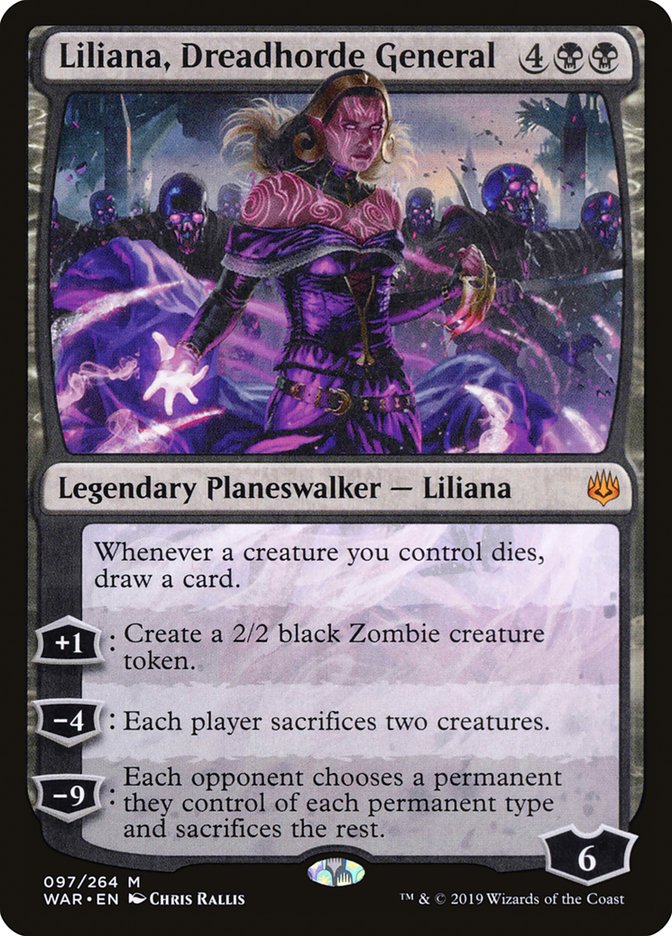Welcome to another edition of Fact or Fiction! Today, Ryan Overturf, Emma Handy, and Ari Lax are here to render their verdicts on five statements about War of the Spark preview season. Don’t forget to vote for the winner at the end!
1. Amass is a Constructed-level mechanic that will have a serious impact on Standard.
Ryan Overturf: Fiction. Amass seems pretty clearly designed for Limited. There are some interesting decisions based on whether you want to amass a giant army or try to use your amass cards to rebuild after your current army is destroyed in Limited games, but for Constructed, amass is a token mechanic that is bad at the one thing tokens are supposed to be good at: going wide. Building up a large creature only to have it removed by a spot removal spell is a huge negative swing, and shy of some sort of hexproof shenanigans, I wouldn’t expect to see a dedicated amass deck in Standard.
That all said, I still expect to see some 0/0 Zombie Army tokens in the feature match area on the SCG Tour. Tacking the ability to make a token onto a card that is efficiently costed will of course be a good thing to do. To borrow from conventional wisdom on evaluating new mechanics, “Good cards with amass are good.”
Emma Handy: Fact. Amass produces unconditional free resources for the player that utilizes it, and that’s exactly the type of mechanic that sees play in Constructed formats. Dreadhorde Invasion alone is close enough to Bitterblossom that it’s not completely unrealistic to draw a parallel between the two cards, even if only in a Standard format.
We’re only a week into War of the Spark previews and we’ve already seen a couple of reasonable cards that utilize the mechanic. The odds that we haven’t even seen the best amass card yet are pretty high.
Ari Lax: Fact. Effects that make tokens stapled onto other cards are good. Grim Initiate is notably just another Doomed Traveler, which is always going to be on the border of Constructed play.
That said, Elvish Visionary has won a bunch of events and Implement of Ferocity was almost always a mistake to play. Amass has extreme diminishing returns in Constructed. Making a 2/2 is worth a card, but adding counters to your 2/2 isn’t necessarily worth a card. Even if Grim Initiate is Doomed Traveler, Dreadhorde Invasion is not Bitterblossom.
Barring some extreme payoffs, you won’t see an amass deck in Standard, but you probably will see amass cards. Widespread Brutality is a sign that there might be something in the works, but that alone won’t cut it.
2. You’re excited about the return of Proliferate.
Ryan Overturf: Fact. Proliferate was initially introduced in part to support the infect mechanic, but I’m very excited to see it applied in new ways. The uncommon planeswalkers in War of the Spark feature only abilities that cost loyalty, and needing to proliferate to get more than a couple of activations from them is just one interesting new application for the mechanic.
We’ll see exactly how Constructed-playable the new proliferate cards end up being, but it’s already a popular mechanic in Commander with some serious Cube considerations as well. Throne of Geth being used to proliferate opposing Chalice of the Voids is something that Josh Utter-Leyton popularized in Legacy, and the mechanic has plenty of potential for other Constructed applications as well. With the right tools, a planeswalker-heavy proliferate deck could be great in Standard.
Emma Handy: Fact. I’m an Infect player at heart, so I’m certainly hoping that there are some efficiently costed cards in the set that can possibly play well in Modern (and to a lesser extent, Legacy).
Infect interactions aside, proliferate felt like an underexplored mechanic when it first came around in Scars of Mirrodin, and seeing it come back is exciting. There are planeswalkers in the set that don’t have the ability to increase their own loyalty, and proliferate squeezing extra value into these cards is exciting on its own.
Ari Lax: Fiction. The planeswalker-proliferate punch line being emphasized in War of the Spark is an example of everything wrong with proliferate.
Proliferate is a bit of a design constraint mess. Having proliferate means that you are capped on what a counter can be worth by the cost of proliferate cards, capped on how you use counters as a limiting factor by the ability to reload, capped on using counters to mark effects like Aether Vial due to proliferate being able to mess with your opponent’s settings, capped on using counters as a subquest because there’s always a proliferate cheat code, and capped on even more, just because proliferate is going to mess that all up.
Proliferate is too open-ended, and as a result, everything else you can do suffers. In the world of proliferate versus, uh, the world, I know which side I’m taking.
3. Planeswalkers having a static ability is the shakeup the card type needed to becoming interesting again.
Ryan Overturf: Fiction. To clarify, I think that giving planeswalkers static abilities is a cool space to explore, but I disagree with the notion that planeswalkers categorically needed a shakeup. You could pessimistically point to Teferi, Hero of Dominaria and Ral, Izzet Viceroy being extremely similar. You could go a step further and say that they both ripped off Ob Nixilis Reignited. I just don’t think it does the situation justice to say this means that there’s no more space to explore without some kind of overhaul. Those designs were assuredly uninspired, but we were still getting hits like Ajani, Adversary of Tyrants and Kaya, Orzhov Usurper.
I’m a huge fan of how the new planeswalkers were designed. Just don’t call it a comeback.
Emma Handy: Fact. The new flavor of planeswalkers we’re seeing in War of the Spark previews is exciting because it redefines what planeswalkers will do.
For the last few years, planeswalkers have been the finishers and the most powerful cards in decks, with entire archetypes built to accommodate them.
These planeswalkers are meant to act as role-players. The static ability makes them feel like an enchantment, but their abilities make them closer to recurring instants and sorceries. This means that, rather than delivering the final blow in the way of a planeswalker ultimate, they’ll have more subtle effects on the game. Think of these cards as different forms of Divination, rather than the previous iterations of planeswalkers that we’ve become accustomed to.
Even if this type of card isn’t as flashy as what we’re used to, it’s giving the card type something else to do, which will have them included in decks more frequently than before, which is a big win.
Ari Lax: Fiction. It’s certainly new and exciting, but if you were sick of planeswalkers, this probably doesn’t fix the issue.
The big complaint about planeswalkers is that they turn the game of Magic into a game of “attack the planeswalker.” Having a static effect doesn’t change that. Honestly, it might make it even worse. Static abilities tend to have binary effects on a game, where they are either massively important or do nothing. You aren’t going to cast the planeswalker if the ability doesn’t matter, so basically you just have made planeswalkers into a clear, ongoing threat and you’re back into the “attack it or lose” subgame.
At least with ticking up and down, sometimes you have windows where the planeswalker effect doesn’t matter. Of course, most of the Constructed-playable planeswalkers draw a card each turn and that potential window doesn’t exist, but this redesign doesn’t fix that.
4. Teferi, Time Traveler is the most powerful planeswalker previewed thus far in War of the Spark.
Ryan Overturf: Fact. I think that there is a very reasonable case to be made for Liliana, Dreadhorde General as a card that can singlehandedly win games, but six mana is a lot higher than three, and Teferi is coming in with a pretty spectacular supporting cast. If you’re able to curve some interaction on Turn 2 into Turn 3 Teferi, Time Traveler, then your opponent likely will hang out watching you curve another point of interaction into the Teferi, Hero of Dominaria that closes things out.
Three loyalty is a steep cost to bounce something, but the fact that Teferi covers so many different card types and that this ability draws a card makes it so you’ll almost always gain meaningful value by casting him. Teferi, Hero of Dominaria will still do the heavy lifting, but Teferi, Time Traveler is a tremendous boon to Standard Azorius decks.
Emma Handy: Fiction. Liliana, Dreadhorde General is incredible.
This card is, like, Elspeth, Sun’s Champion-level good.
The fact that she will almost always result in card advantage is out of this world, and her -4 synergizing with her own static ability in such a way that it keeps more protection coming is just fantastic. Her final ability is almost irrelevant because her -4 is generally going to be “Barter in Blood. Draw two cards.” That’s hard to pass up in any game that is ever close to close.
We’ve seen with Vraska, Relic Seeker just how powerful it is to make a 2/2 with a plus ability from a planeswalker. This Liliana will see Standard play.
Ari Lax: Fiction. Liliana, Dreadhorde General is probably better. Killing multiple creatures with a -4 is really absurd and almost assures your planeswalker is safe for a turn. It even clears out Carnage Tyrant, the competing six-drop of the format. Besides that, the card is at least the threat half of Vraska, Relic Seeker, a proven good planeswalker.
Davriel, Rogue Shadowmage is probably better. Three mana for a three-for-one is great, and three mana for a two-for-one plus a threat is also great. I expect Davriel to be an extremely important sideboard card at the least, and possibly just a good threat in midrange and control dominated formats.
Teferi, Time Traveler is good, but not insane. It takes a long time for it to produce a second card of value, bouncing a creature means they just recast it, and there’s no chance they just run out of threats, which makes it a cantrip Defense Grid or Grand Abolisher. Those aren’t bad cards, but they have narrow roles to play.
5. The War of the Spark trailer is the coolest piece of media Magic has ever produced.
Ryan Overturf: Fact. Is there actual competition? Am I supposed to pretend that the cringey Motel California promos on MTV in the 90s somehow outclassed this? Bob from Accounting?
I guess high school Ryan would object to using a cover of Linkin Park instead of the real thing, but I can’t imagine either is cheap to use and the cover easily has a better sound for this context. I am by no means a Vorthos, but I would be happy to buy a couple of rounds of drinks for anybody who wants to catch me up to speed on the current lore. This trailer gave me goosebumps and I’m somebody who legitimately didn’t know what people meant when they called cards “flavorful” for my first ten years playing the game.
Emma Handy: Fiction.
No further questions will be answered at this time.
Ari Lax: Fiction. What do you define as media? Promotional material? If so, I’m partial to the ancient commercials featuring Bob from Accounting.
Video content? If so, I’m a sucker for good coverage and there’s hundreds of matches of Magic I found more interesting. Not the flashy Lightning Helix moments, the more tactically awesome Force Spike moments.
All content? Some of the old books are pretty good. I’m partial to The Thran, The Brother’s War, Timelines, and Arena from the original series where you could clip out a page and mail it in for a Mana Crypt. The closing short of the Eldritch Moon story “The Promised End” is also exceptional.


